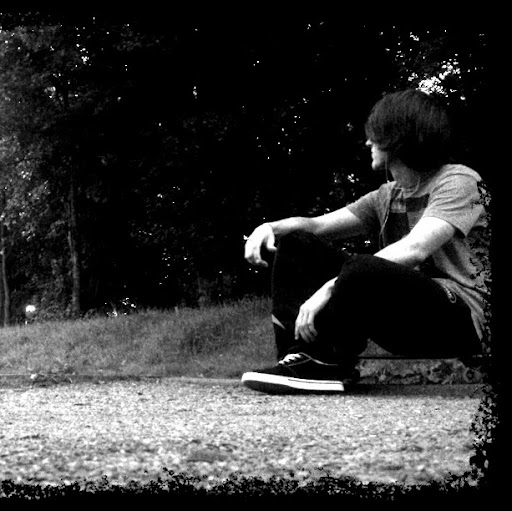Philip M Meier
age ~45
from La Jolla, CA
- Also known as:
-
- Philip Martin Meier
Philip Meier Phones & Addresses
- La Jolla, CA
- San Diego, CA
- 747 Haverford Ave, Pacific Plsds, CA 90272 • 8584051616
- Pacific Palisades, CA
- Saint Louis, MO
- Cambridge, MA
- 16571 Chattanooga Pl, Pacific Plsds, CA 90272
Us Patents
-
Evaluation Of Three-Dimensional Scenes Using Two-Dimensional Representations
view source -
US Patent:20130177235, Jul 11, 2013
-
Filed:Jan 7, 2013
-
Appl. No.:13/736060
-
Inventors:Philip Meier - Pacific Palisades CA, US
-
International Classification:G06T 15/00
-
US Classification:382154
-
Abstract:A system adapted to implement a learning rule in a three-dimensional (3D) environment is described. The system includes: a renderer adapted to generate a two-dimensional (2D) image based at least partly on a 3D scene; a computational element adapted to generate a set of appearance features based at least partly on the 2D image; and an attribute classifier adapted to generate at least one set of learned features based at least partly on the set of appearance features and to generate a set of estimated scene features based at least partly on the set of learned features. A method labels each image from among the set of 2D images with scene information regarding the 3D scene; selects a set of learning modifiers based at least partly on the labeling of at least two images; and updates a set of weights based at least partly on the set of learning modifiers.
-
Method For The Graphical Display Of Information Tailored To The Encoding Format Of The Mammalian Visual System
view source -
US Patent:20130222361, Aug 29, 2013
-
Filed:Jan 7, 2013
-
Appl. No.:13/736066
-
Inventors:Philip Meier - Pacific Palisades CA, US
-
International Classification:G06T 9/00
-
US Classification:345418
-
Abstract:This is a method for generating static and moving information graphics. The method allows for the novel mapping of raw data to a intermediate format and then associating the intermediate format with graphical features of a visual display. The display features are tailored to the encoding format of visual neurons, including but not limited to the receptive fields of the LGN, V1, V2, MT and MSTd. The utility of the method is to provide a visualization to communicate high dimensional data sets to a human user in a format that has one or more of the following properties: is highly intuitive, maximizes bit rate, supports judgment for a classification task, facilitates outlier detection, emphasizes relevant differences in data sets, and enables visual inference.
-
Apparatus And Methods For Controlling Attention Of A Robot
view source -
US Patent:20220283060, Sep 8, 2022
-
Filed:May 20, 2022
-
Appl. No.:17/749863
-
Inventors:- San Mateo CA, US
Philip Meier - San Diego CA, US -
International Classification:G01N 1/22
B25J 9/16
G05B 19/42
B60K 11/02
F01P 3/20
G01N 1/44
G01N 33/00 -
Abstract:An automated control system including an unmanned aerial vehicle (UAV) and an input device. The UAV includes: a sensor, a receiver; and memory. The memory includes a task association data including one or more tasks for execution by the UAV. The input device includes a tagging block. The tagging block allows an operator to tag an object of interest and send a tag regarding the object of interest to the UAV, via the receiver, wherein the object of interest is located within a visual field of the UAV. The sensor processes data within the visual field and the input device is configured to communicate the object of interest from the visual field tagged by the operator. The task is selected from the task association data and the UAV executes the task with respect to the object of interest from the visual field.
-
Animal Interaction Devices, Systems And Methods
view source -
US Patent:20200236901, Jul 30, 2020
-
Filed:Apr 2, 2020
-
Appl. No.:16/839003
-
Inventors:Leo TROTTIER - San Diego CA, US
Daniel KNUDSEN - San Diego CA, US
Philip MEIER - San Diego CA, US
Gary SHUSTER - Vancouver, CA -
International Classification:A01K 5/02
A01K 29/00
A01K 15/02
G01J 5/00
H04N 7/18 -
Abstract:Devices, systems and methods for animal training, animal feeding, animal management, animal fitness, monitoring and managing animal food intake, remote animal engagement, behavioral training and animal entertainment are disclosed. Embodiments of the present invention provide devices, systems and methods for measuring a dog's energy expenditures and/or movements, and providing signals to the dog to engage in activities or games to earn food. In one aspect, one or more of the dog's activity level, age, weight, body mass, and/or other health information is utilized to determine an appropriate food intake level for the dog. By measuring the dog's activity, the amount of calories the dog needs and/or has utilized may be determined. By encouraging activity by the dog, the dog's health may improve, even if the dog's weight remains unchanged. Among other embodiments disclosed herein, various mechanisms capable of moderating animal noise and/or behavior are disclosed.
-
Systems And Methods For Generating Composite Media Using Distributed Networks
view source -
US Patent:20190370554, Dec 5, 2019
-
Filed:Jun 5, 2019
-
Appl. No.:16/432865
-
Inventors:Philip Martin Meier - La Jolla CA, US
-
International Classification:G06K 9/00
G06T 7/246
G10L 21/10 -
Abstract:A distributed systems and methods for generating composite media including receiving a media context that defines media that is to be generated, the media context including: a definition of a sequence of media segment specifications and, an identification of a set of remote devices. For each media segment specification, a reference segment may be generated and transmitted to at least one remote device. A media segment may be received from each of the remote device, the media segment having been recorded by a camera. Verified media sequences may replace the corresponding reference segment. The media segments may be aggregated and an updated sequence of media segments may be defined. An instance of the media context that includes a subset of the updated sequence of media segments may then be generated.
-
Apparatus And Methods For Controlling Attention Of A Robot
view source -
US Patent:20180117761, May 3, 2018
-
Filed:Dec 22, 2017
-
Appl. No.:15/852821
-
Inventors:- San Mateo CA, US
Philip Meier - San Diego CA, US -
International Classification:B25J 9/16
G05B 19/42 -
Abstract:A method includes receiving, from an imaging device associated with a robotic apparatus, an image signal; identifying an object of interest that is represented in the image signal, wherein the object of interest is identified by the robotic apparatus using the image signal based on irradiation of the object of interest by an external agent; receiving, by the robotic apparatus from the external agent, a task indication that is representative of a task to be performed by the robotic apparatus. Responsive to receipt of the task indication, the method further includes saving a robotic context including information associating the task to be performed with the object of interest, and causing the robotic apparatus to perform the task with respect to the object of interest.
-
Animal Interaction Devices, Systems And Methods
view source -
US Patent:20170196196, Jul 13, 2017
-
Filed:Jan 9, 2017
-
Appl. No.:15/402174
-
Inventors:Leo TROTTIER - San Diego CA, US
Daniel KNUDSEN - San Diego CA, US
Philip MEIER - San Diego CA, US
Gary SHUSTER - Fresno CA, US -
International Classification:A01K 5/02
H04N 7/18
G01J 5/10
G01J 5/00
A01K 29/00
A01K 15/02 -
Abstract:Devices, systems and methods for animal training, animal feeding, animal management, animal fitness, monitoring and managing animal food intake, remote animal engagement, behavioral training and animal entertainment are disclosed. Embodiments of the present invention provide devices, systems and methods for measuring a dog's energy expenditures and/or movements, and providing signals to the dog to engage in activities or games to earn food. In one aspect, one or more of the dog's activity level, age, weight, body mass, and/or other health information is utilized to determine an appropriate food intake level for the dog. By measuring the dog's activity, the amount of calories the dog needs and/or has utilized may be determined. By encouraging activity by the dog, the dog's health may improve, even if the dog's weight remains unchanged. Among other embodiments disclosed herein, various mechanisms capable of moderating animal noise and/or behavior are disclosed.
-
Apparatus And Methods For Controlling Attention Of A Robot
view source -
US Patent:20170080561, Mar 23, 2017
-
Filed:Sep 19, 2016
-
Appl. No.:15/269761
-
Inventors:- San Mateo CA, US
Philip Meier - San Diego CA, US -
International Classification:B25J 9/16
-
Abstract:Apparatus and methods for controlling attention and training of autonomous robotic devices. In one approach, attention of the robot may be manipulated by use of a spot-light device illuminating a portion of the aircraft undergoing inspection in order to indicate to inspection robot target areas requiring more detailed inspection. The robot guidance may be aided by way of an additional signal transmitted by the agent to the robot indicating that the object has been illuminated and attention switch may be required. Responsive to receiving the additional signal, the robot may initiate a search for the signal reflected by the illuminated area requiring its attention. Responsive to detecting the illuminated object and receipt of the additional signal, the robot may develop an association between the two events and the inspection task. The light guided attention system may influence the robot learning for subsequent actions.
Resumes

Consultant
view sourceLocation:
1870 La Jolla Rancho Rd, La Jolla, CA 92037
Industry:
Internet
Work:
Philip Meier Design
Consultant
Cleverpet
Chief Product Officer, Co-Founder
Brain Corp 2012 - 2015
Scientist
University of California, San Diego 2005 - 2011
Ph.d Research
Startup Leadership Program 2010 - 2011
Fellow
Consultant
Cleverpet
Chief Product Officer, Co-Founder
Brain Corp 2012 - 2015
Scientist
University of California, San Diego 2005 - 2011
Ph.d Research
Startup Leadership Program 2010 - 2011
Fellow
Education:
Uc San Diego 2005 - 2010
Doctorates, Doctor of Philosophy, Neuroscience Washington University In St. Louis 1999 - 2003
Bachelors, Bachelor of Fine Arts, Drawing, Psychology, Philosophy, Neuroscience Uc San Diego 2000 - 2001
Doctorates, Doctor of Philosophy Harvard - Westlake School 1995 - 1999
Doctorates, Doctor of Philosophy, Neuroscience Washington University In St. Louis 1999 - 2003
Bachelors, Bachelor of Fine Arts, Drawing, Psychology, Philosophy, Neuroscience Uc San Diego 2000 - 2001
Doctorates, Doctor of Philosophy Harvard - Westlake School 1995 - 1999
Skills:
Neuroscience
Computer Vision
Machine Learning
Python
Drawing
Video
Psychophysics
Neurophysiology
Computational Neuroscience
Algorithms
Cognitive Science
Data Analysis
Experimentation
Life Sciences
Mathematical Modeling
Matlab
Programming
Research
Science
Scientific Writing
Signal Processing
Statistics
Computer Vision
Machine Learning
Python
Drawing
Video
Psychophysics
Neurophysiology
Computational Neuroscience
Algorithms
Cognitive Science
Data Analysis
Experimentation
Life Sciences
Mathematical Modeling
Matlab
Programming
Research
Science
Scientific Writing
Signal Processing
Statistics
Languages:
English
Spanish
Spanish

Philip Meier
view source
Philip Meier
view source
Philip Meier
view source
Philip Meier
view source
Philip Meier
view source
Philip Meier
view source
Philip LaVane Meier
view source
Philip Meier
view source
Phil Meier
view sourceYoutube
Myspace

Phillip Meier (SchMeier [...
view sourceJul 30, 2010 Phillip Meier (SchMeier [K.D.W. - VIP])'s profile on Myspace, the leading social entertainment destination powered by the passion of our fans.
Googleplus

Philip Meier
Education:
UCSD - Computational Neuroscience, Washington University in St. Louis - Philosophy, Neuroscience, Drawing

Philip Meier
Work:
Brain Corporation - Scientist

Philip Meier

Philip Meier

Philip Meier

Philip Meier

Philip Meier

Philip Meier
Classmates

Philip Meier | River Fall...
view source
Philip Meier, Hannibal Hi...
view source
Albion College, Albion, M...
view sourceGraduates:
Philip Meier (1973-1977),
Megan McGovern (1969-1972),
Jon Weichelt (1955-1959),
Steve Johnson (1974-1975)
Megan McGovern (1969-1972),
Jon Weichelt (1955-1959),
Steve Johnson (1974-1975)
Mylife

Phillip Meier Palmer AK
view sourceTry the people finder at MyLife to find Phillip Meier and other old friends from Palmer. Get back in touch today.
Plaxo

Philip Meier
view sourceService Delivery Manager EMEA at Unisys
Get Report for Philip M Meier from La Jolla, CA, age ~45





